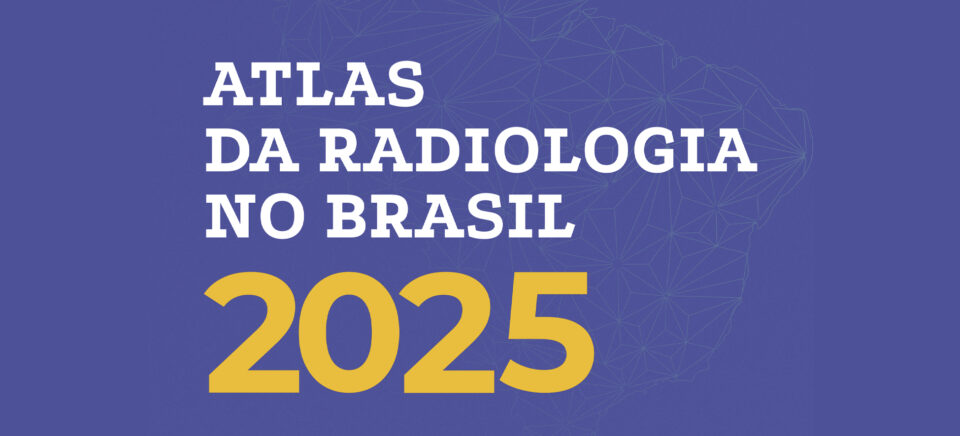Strengthening healthcare management planning, especially in the public health system, is essential to expanding breast cancer prevention and ensuring access to early diagnosis and treatment. To contribute to this process, the Brazilian College of Radiology and Diagnostic Imaging (CBR) launched the Atlas of Radiology in Brazil, a publication that presents an overview of diagnostic imaging assistance based on information from the public and private sectors, offering support for the implementation of policies and programs aimed at reducing inequalities in the country.
O Atlas, available for download The document, published on the CBR website, gathers data on radiologists, healthcare coverage, and the distribution of equipment such as CT scanners, MRIs, and X-ray machines. Published in October—Breast Cancer Awareness Month—the document contributes to the debate on the topic and reinforces the importance of planning and integration between the different levels of the healthcare network.
Access the full version here Atlas of Radiology in Brazil 2025.
Indicators show that, although Brazil has an adequate number of mammogram machines, distribution is uneven and difficulties in accessing services remain significant challenges.
This situation reflects regional and sectoral differences, with a greater concentration of equipment in the Southeast and a smaller presence in the North.
"Breast cancer screening, however, goes beyond the availability of equipment: it requires a well-structured care pathway, with efficient logistics, primary care training, trained professionals, and public engagement. It's up to management to strive for integration and quality in all phases of care," says CBR president Rubens Chojniak.
Mammograms and screening – According to the National Cancer Institute (INCA), more than 73,000 women are diagnosed with breast cancer every year in Brazil. In September, the Ministry of Health updated its screening guidelines, recommending that women between 40 and 49 years old, even without signs or symptoms, also undergo mammograms, an age group that accounts for approximately 22% of deaths from the disease. Early detection significantly increases the chances of a cure, but making this goal a reality remains a challenge in many regions of the country.
The CBR survey cross-referenced data from the National Registry of Healthcare Establishments (CNES)—which compiles information from the public health system—with that of the National Supplementary Health Agency (ANS), responsible for regulating health plans. In 2024, Brazil had 6,826 registered mammography machines, of which 961 3TPs were in operation. Despite this, the national mammography coverage rate is low. It stands at approximately 581 3TPs, considering the Unified Health System (SUS) and supplemental health plans.
These data indicate that the main challenge lies not in the number of devices, but in effective access and patient attendance at screening services. In regions with the highest concentration of mammography machines, such as the Southeast and South, mortality rates remain among the highest in the country, around 271 PT3T, especially among white women. This figure has remained stable since 2010, while the North saw a significant increase in mortality, rising from 131 PT3T to 231 PT3T between 2010 and 2024.
Regional and sectoral inequality – In proportional terms, the national density is 3.21 devices per 100,000 inhabitants. Roraima has the lowest proportion (1.53 per 100,000), followed by Ceará (2.23) and Pará (2.25). Paraíba leads with 4.32, followed by the Federal District (4.26) and Rio de Janeiro (3.93).
Of the total number of mammogram machines, approximately half (3,412) are available through the Unified Health System (SUS), which serves approximately 751 people in Brazil. This represents 2.13 machines per 100,000 people dependent on the public system, a proportion considered sufficient in absolute numbers, but still inefficient in terms of access and actual utilization.
In contrast, women with health insurance plans have, on average, three times more mammogram machines available than SUS patients. The supplementary sector, which covers 251 people, offers 6.54 machines per 100,000 inhabitants, compared to 2.13 in the public sector. In Acre, the difference is stark: there are 35.38 mammogram machines per 100,000 inhabitants in the private sector, compared to 0.84 in the SUS.
The CBR recognizes the strategic role of supplementary health care in expanding the availability of testing and incorporating technologies, but emphasizes that the Unified Health System (SUS) is the primary guarantor of the right to health in Brazil. Integration between sectors must be planned to reduce inequalities and strengthen regional care networks.
Commitment to access and equity – The Radiology Atlas in Brazil compiles data on the structure, human resources, and challenges of imaging diagnosis in the country. The publication presents, among other aspects, the distribution of mammography machines in use (in the SUS and private healthcare systems) and their density per 100,000 users, among other factors. For more details, see the table below.

"Ensuring that breast cancer screening is accessible to all women, regardless of income or place of residence, is an essential step towards consolidating prevention and early diagnosis as a true collective public health commitment," concludes the CBR president.




